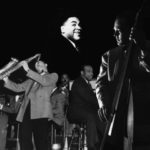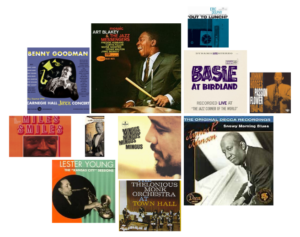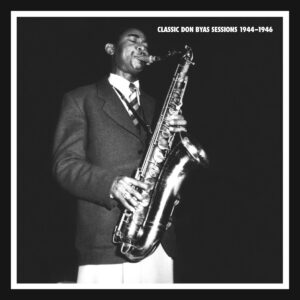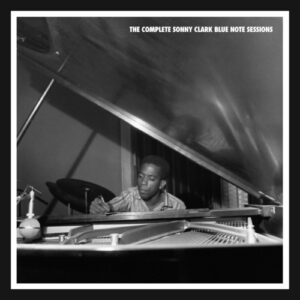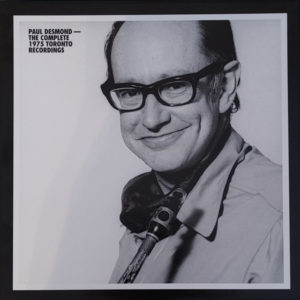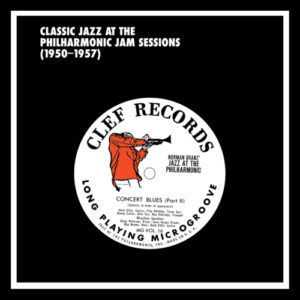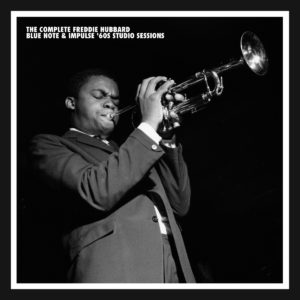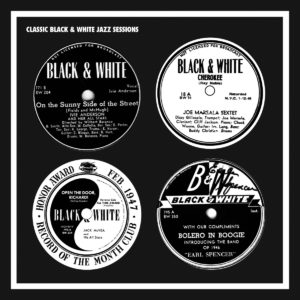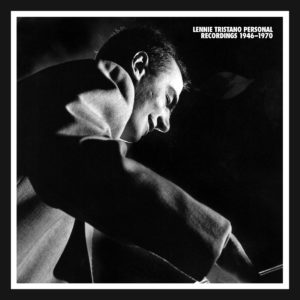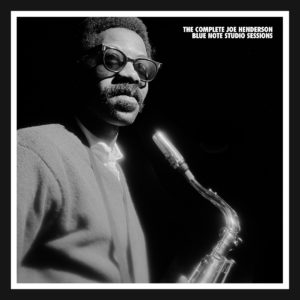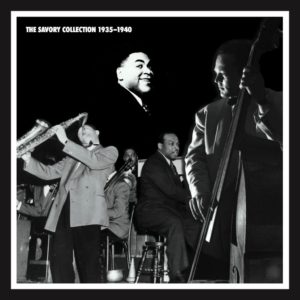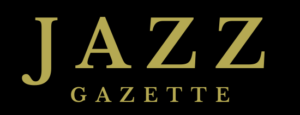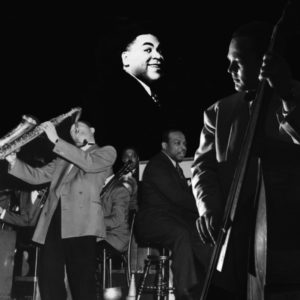Duke Ellington
"Ellington plays the piano, but his real instrument is the band. Each member of the band is to him a distinctive tone color and set of emotions, which he mixes with others equally distinctive to produce a third thing, which I like to call the Ellington Effect." – Billy Strayhorn
Duke Ellington
By Gary Giddins
In its originality, scope, and abundance, Duke Ellington’s music has no rivals in jazz, and few outside of jazz. Duke Ellington is often called America’s greatest composer and just as often ignored entirely in discussions of American music, an indication of a separatism that continues to vex the nation’s cultural habits.
The question of how he measures up to his contemporaries in the European tradition is one I’ll leave to academics, but Duke Ellington’s own ambivalence about the word “jazz” is worth noting. He tried to rid himself of it as early as the late ’20s, blaming it in part for the tendency of commentators to interpret his use of improvisation, dance rhythms, and blues tonalities as evidence of nonseriousness. Like Mozart, he wrote music specifically designed for dance and concert and again like Mozart, fudged the distinction between the two by the originality and consistency of his vision.
Still, if Duke Ellington’s music stands apart, it is entirely rooted in what we recognize as jazz principles and usually (but by no means always) exhibits some or all of the standard characteristics: an equation of composition and improvisation, robust rhythms, dance band instrumentation, blues and song frameworks, blues tonality. Jazz is primarily a music of improvisation, and improvisers of genius—Louis Armstrong, Charlie Parker—were able to recast it in their own idioms.
But no instrumentalist has experimented as constantly and variously over so long a period of time as Duke Ellington did with his orchestra or dared as substantial a body of through-composed work. Calling Duke Ellington a bandleader is like calling Bach an organist, which, of course, is precisely how they were known to their contemporaries.
Duke Ellington: The Blanton/Webster Band
Jack The Bear
This is the great Duke Ellington band that brought swing into the modern era. Includes Ben Webster, Jimmy Blanton, Cootie Williams, Rex Stewart and Johnny Hodges.
“I regard my entire orchestra as one large instrument, and I try to play on that instrument to the fullest of its capabilities. My aim is and always has been to mold the music around the man. I’ve found out that it doesn’t matter so much what you have available, but rather what you make of what you do have—finding a good “fit” for every instrumentalist in the group. I study each man in the orchestra and find out what he can do best, and what he would like to do.
In the same period, Duke Ellington told an interviewer, “You can’t write music right unless you know how the man who’ll play it plays poker.”
He was able to tailor his music to the man because he recognized early on that a trumpet solo by Cootie Williams was a very different animal from a trumpet solo by Arthur Whetsol. In jazz, an instrument does not predicate an ideal sound from which, once mastered, individuality may flower.
As Buddy Tate once observed, the jazz musician‘s individual sound is far more important than the instrument’s innate qualities and may even precede orthodox mastery. Duke Ellington crafted a score as though he were casting the roles in a drama—offering a “Concerto for Cootie,”not a concerto for trumpet. When Johnny Hodges died, Duke Ellington’s sister Ruth asked him who would replace the incomparable saxophonist; he replied, “No one can replace him.”
Because he wrote intuitively and pragmatically, he happened upon many of the sounds we now identify as Ellingtonian with the kind of impetuous creativity associated with improvisation. Imagine the scene at a recording studio: The musicians are assembled, and the parts of a new score have been distributed. The band plays it through, and Duke Ellington begins to call out alterations: in bar six, third trumpet should flat the A-natural; in the second release, the bass trombone will play in tandem with the reeds; in the last chorus, the violin solo will continue another eight bars. By the time he has honed the piece to his satisfaction, and the recording made, the result is significantly different from the original manuscript.
Over time, Duke Ellington might continue to make changes, large and small, so that the basic arrangement might appear in a dozen different recorded versions. Which is the correct one? The issue of correctness (as opposed to comparative excellence) is as spurious here as in a discussion of various blues improvisations by Johnny Hodges. In those many instances where Duke Ellington and his copyists failed to incorporate the alterations in a master score, the records are the only incontestable documents of the finished work.
As a result, the secrets behind many of Duke Ellington’s most colorful effects died with him and his musicians, forcing subsequent bands to rely on the unscientific practice of transcription. When Mercer Ellington took over the orchestra after his father’s death, he tried in vain to simulate the train whistle effect produced by the reeds in “Daybreak Express,” ultimately admitting defeat and using a slide whistle.
Duke Ellington’s cryptic orchestrations—exemplified in the first chorus of ‘Mood Indigo,” voiced for straight-muted trumpet, plunger-muted trombone, and clarinet—prompted Andre Previn’s observation: “Stan Kenton can stand in front of a thousand fiddles and a thousand brass and make a dramatic gesture and every studio arranger can nod his head and say, ‘Oh, yes, that’s done like this.’ But Duke merely lifts a finger, three horns make a sound, and I don’t know what it is.” – Gary Giddins, Visions of Jazz: The First Century excerpt; reprinted with permission
Masterful Pianist
Edward Kennedy “Duke” Ellington (1899-1974) was a masterful pianist of great technical ability, creativity and taste. He was both a great solo pianist–who unfortunately seldom recorded without his orchestra–and a great big band pianist whose playing often inspired the others in their solo efforts. As a boy in Washington D.C., he took his first piano lessons from a Mrs. Clinkscales. In his teens he received some additional lessons and pointers from, among others, “Doc” Perry and Harvey Brooks.
He learned James P. Johnson’s famous stride piece Carolina Shout by slowing down a piano roll and observing which of the piano’s keys were depressed. When he came to New York in 1923, he was befriended and mentored by Willie “the Lion” Smith, among others. At the Club Kentucky in the fall of 1925, the club hired a second pianist for a brief spell: Thomas “Fats” Waller. A veteran of countless Harlem rent parties and piano cutting contests, Duke Ellington was steeped in the stride piano tradition. He could also be a strikingly original modernist whether playing solo or backing the solos of others.
André Hodeir and Gunther Schuller, in The New Grove Encyclopedia, summed up Duke Ellington’s piano skills thusly: “Duke Ellington’s talents as a pianist are generally neglected or underrated. While he rarely featured himself as a soloist with his orchestra, he was nevertheless a remarkably individual contributor to the overall ‘Ellington effect.’
He saw himself primarily as a catalyst and accompanist, a feeder of ideas and rhythmic energy to the band as a whole or to its soloists. In this unobtrusive role, playing only when necessary, he was known for remaining silent during entire choruses or indeed pieces. His piano tone, produced deep in the keys, was the richest imaginable; it had the ability to energize and inspire the entire orchestra.” – Steven Lasker, liner note excerpt Mosaic Records: The Complete 1932-1940 Brunswick/Columbia/Master Recordings of Duke Ellington and His Famous Orchestra
Key Contributors to “The Ellington Effect”
“No other band is like Ellington’s and it is doubtful if any other band will ever be like it. Whatever number goes into the Ellington music mill must come out Ellington music.” – Cootie Williams
Johnny Hodges
Johnny Hodges (1906-70) first met Sidney Bechet in Boston while in his teens. Bechet, who was friendly with Johnny’s sister, gave Hodges music lessons and style pointers that served Hodges throughout his career. Duke Ellington believed Hodges to be “a combination of himself and Sidney Bechet, who loved him and encouraged him.” Hodges figured “I had quite a few of his [Bechet’s] riffs. Quite a few of his pets. My pets too. Used to nurse ’em.” Bechet, who played briefly with Duke Ellington in 1924, was additionally a profound influence on the musical thinking of Carney–a childhood friend of Hodges who also came from Boston, also on Bigard, Hardwick and even Duke Ellington himself.
Hodges joined Duke Ellington at the Cotton Club in May 1928, and quickly became a featured soloist on soprano and alto saxes, the (straight) soprano being one that Bechet had given him; he also played section clarinet. While Hodges initially achieved renown for his hot choruses, especially up-tempo ones, he cultivated a second specialty playing sultry ballads, and was the band’s most popular soloist from the 1930s on. His small group sessions were infrequent at first, but after Jeep’s Blues became a huge hit, many more dates came his way. When the total number of small group recordings for Variety, Vocalion and OKeh are tallied, more titles were recorded under the nominal leadership of Hodges (46) than Williams (35), Bigard (26) or Stewart (9).
Cootie Williams
Charles Melvin “Cootie” Williams (1911-1985) played second trumpet–although he often played lead. Born in Mobile, Alabama, he played trombone, tuba and drums in the school band, then picked up the trumpet. He worked briefly with Chick Webb and Fletcher Henderson before joining Duke Ellington in February 1929 and replaced “Bubber” Miley, who during his tenure with Ellington founded the band’s growl trumpet chair. Cootie, who would become the most celebrated growl trumpeter in jazz history, wasn’t a growler when he joined the band, but he’d heard Miley on broadcasts from the Cotton Club, and after six or seven weeks listening to Joe Nanton growl on the trombone every night figured he’d better learn to do it on the trumpet.
As Cootie later recalled, “I practiced at home how to do it and then one night when I had a solo to play on something I picked up the plunger and surprised the band with a growl solo. When we came off the stand Duke and the boys said, ‘That’s it, that’s it. Keep that in.’ So then I knew that was what Duke wanted me to do, though he never did tell me to do it.” When Cootie played open trumpet, he often sounded like his idol, Louis Armstrong. Duke Ellington often used Williams’ trumpet in tandem with Johnny Hodges’ alto saxophone.
Rex Stewart
Rex Stewart (1907-67) was born in Philadelphia but raised in Washington, D.C. When the cornetist joined Duke Ellington in the last days of 1934, he was already an established star who’d played with Fletcher Henderson, McKinney’s Cotton Pickers and led his own band. As a jazz musician and as a personality, Rex was outsized, brilliant, funny, quirky, unique. He was a great influence on Roy Eldridge, the up-and-coming trumpet star of 1937.
Barney Bigard
Albany “Barney” Bigard (1906-80) of New Orleans moved to Chicago in 1925 where he joined King Oliver’s orchestra, quickly became the city’s top tenor sax man, and recorded with Oliver, Jelly Roll Morton, and Johnny Dodds. “Barney Bigard,” reminisced Duke Ellington, “joined us in 1927 when we augmented the band for the first engagement at the Cotton Club. I had heard him for the first time when he was playing for King Oliver in a battle of music with Fletcher Henderson at the Savoy. He is a very original and imaginative clarinet player, and he gave our band another of its distinctive sound identities. Like several of the best clarinet players from New Orleans, he was taught by Lorenzo Tio, Jr. He always played the Albert system, and he had that woody tone which I love on the instrument. He was invaluable for putting the filigree work into an arrangement, and sometimes it could remind you of all that delicate wrought iron you see in his hometown.” In 1942, weary after 11 years on the road, Bigard left Duke Ellington.
Juan Tizol
Valve trombonist Juan Tizol (1900-1984) moved from his native Puerto Rico in 1920 to Washington D.C. where he found work in the pit orchestra at the Howard Theatre and soon met Sonny Greer and Duke Ellington. Tizol toured in the 1920s and was in New Jersey in 1929 with Cliff Jackson when he was invited by Duke Ellington to take part in a Cotton Club broadcast. Soon thereafter, he joined Duke Ellington’s ranks as a regular member. With two trombones, Duke Ellington could use them as a section. Moreover, Tizol’s valve trombone was often assigned a part to play alongside the trumpet or saxophone sections. Duke Ellington appreciated Tizol’s musicianship–Tizol had more formal music training than probably any other Ellingtonian in the 1920s and 1930s–and drafted Tizol as the band’s transcriber, and extractor of parts from Duke Ellington’s manuscript scores.
Harry Carney
Before joining forces with Duke Ellington in June 1927, Harry Howell Carney (1910-74) played clarinet, alto sax and two instruments he would soon give up, soprano and tenor saxes. He picked up the baritone saxophone during the first week of his 47-year tenure with Duke Ellington, and before long was the undisputed top man on the instrument in all of jazz, without a serious rival until Gerry Mulligan came on the scene.
Eddie Lambert aptly summed up Harry Carney’s contributions to the big band: “In many ways Carney was, after Duke himself, the key member of the orchestra. It was he, more than anyone, who was responsible for the rich sonority and the rhythmic zest of the Ellington ensemble. His playing was amazingly consistent, and his tone on baritone sax was of incredible depth and resonance. He was able to vary his sound through a remarkably wide range of tone colors. He was a musician of perfect taste with an emotional range which varied from a gentle, wistful kind of playing to a driving, bouncing ebullient style which was quite inimitable.”
Sonny Greer
If anybody took the place of the brother Duke Ellington never had, it was drummer William Alexander “Sonny” Greer (1895-1982), one of the original Washingtonians. Greer moved to Washington D.C. in 1919, and struck up a musical partnership with Duke Ellington that lasted until 1951.”In [Ellington’s] recordings of the 1920s and early 1930s,” Eddie Lambert wrote, “Greer’s contribution is often one of color and rhythmic decoration: he was outstanding at this time for his subtle use of cymbals. Unlike most jazz drummers of his generation he does not seem to have been influenced by the New Orleans drummers but rather to have drawn upon his experience as a theater percussionist.”
Duke Ellington concluded that “Greer was not the world’s best reader of music, but he was the world’s best percussionist reactor. When he heard a ping he responded with the most appropriate pong. Any tune he was backing up had the benefit of rhythmic ornamentation that was sometimes unbelievable. And he used to look like a high priest, or a king on a throne, ‘way up above everybody, with all his gold accessories around him, all there was room for on the stand!” Sonny was outgoing, gregarious, friendly–and quick to make friends wherever he went. – Steven Lasker, liner note excerpt Mosaic Records: Duke Ellington: The Complete 1936-1940 Variety, Vocaliaon & OKeh Small Group Recordings

